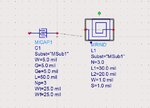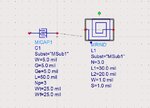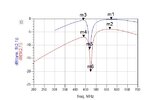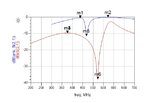rathankh
Newbie level 5
Dear sir does the same equations will be valid if the inductor or capacitor are in shunt...
Y11 = Im(Y(1,1))
C1=1.0E12 / ( 2 * _PI * _FREQ * ( 1 / Y11 ) )
Where
L1=1.0E9 * ( 1 / Y11 ) / ( 2 * _PI * _FREQ )
L1: Effective Inductance (in nH) of a series RL network
C1: Effective Capacitance (in pF) of a series RC network
_FREQ: is project frequencies in GHz
Please let me know what are the changes to be done to model the same in to capacitor or inductor 's planar equivalent.
Thnaks
Y11 = Im(Y(1,1))
C1=1.0E12 / ( 2 * _PI * _FREQ * ( 1 / Y11 ) )
Where
L1=1.0E9 * ( 1 / Y11 ) / ( 2 * _PI * _FREQ )
L1: Effective Inductance (in nH) of a series RL network
C1: Effective Capacitance (in pF) of a series RC network
_FREQ: is project frequencies in GHz
Please let me know what are the changes to be done to model the same in to capacitor or inductor 's planar equivalent.
Thnaks








